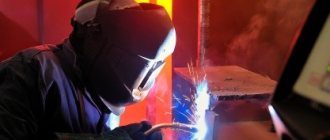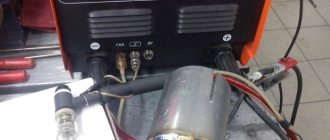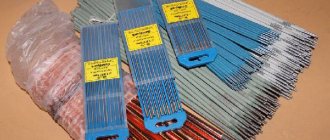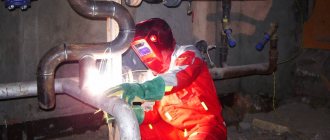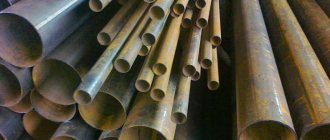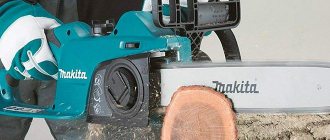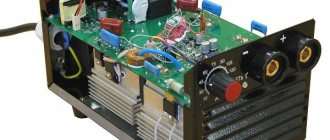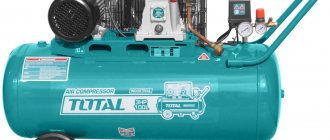When installing highways and utility networks, pipeline welding with electric arc or gas equipment is often used. Electric welding of pipes is carried out manually and using semi-automatic machines. The choice of additive is made according to the grade of rolled pipe steel. Taking into account the technological features, low pressure pipelines can be installed independently.
Features of pipe welding
When welding steel pipelines, gas and electric welding are most often used. When installing high-pressure pipe structures, special requirements are placed on electrodes and filler wire. The layering of the joints depends on the wall thickness:
- weld a joint up to 3 mm inclusive at a time;
- over 3 to 6 mm, two penetrations must be made;
- over 6 to 12 mm - create a three-layer connection;
- over 12 mm it is better to go through the joint at least 4 times.
In pipe welding technology there are distinctive features of the choice of operating current:
- amperage is selected according to the diameter of the electrode, multiplying the indicator by 35 (3 mm - 105 A, 4 mm - 140 A);
- when welding pipes with a wall thickness of less than 4 mm, a current exceeding 150 A is not installed;
- between the electrode and the rolled product, a distance equal to the thickness of the electrode plus 1 mm is maintained;
- thin-walled rolled products are welded in one continuous pass, turning the rolled products, thick-walled rolled products can be welded in sections up to 15 cm long;
- vertical and non-rotary joints are welded in two stages;
- The melt pool is located 30° from the top point.
The finishing layer roller should protrude up to 3 mm above the pipe. The quality of the connection is checked after each penetration, when the scale is removed.
Fistula removal
How to weld a water pipe using electric welding with the maximum degree of reliability? The exact instructions depend on the nature of the damage. Let's start with how to eliminate a fistula in a water pipe, that is, a round hole from which liquid oozes.
In this case, you need to take a position that allows you to clearly observe the boundaries of the damage, and the electrodes are held perpendicular to the base to minimize the volume of water falling on them. Work is carried out from top to bottom until the hole is completely hidden by the deposited metal.
The procedure is as follows:
- metal is fused to the upper part of the fistula;
- 2 blows are made with a hammer immediately after the arc goes out. This promotes compaction of the material and eliminates pore formation;
- the cycle repeats from top to bottom;
- if there is thinning of the walls along the edges of the hole, they are strengthened using the method described above;
- when steam stops oozing out, the pipe wall becomes stronger. The current is set to a minimum to prevent through burning. The required volume of material is gradually deposited;
- To increase strength, the formed seam is tapped.
This video shows in detail how to weld a fistula in a pipe (lower position):
Forming a cut-in
Welding under steam pressure can also be performed if it is necessary to install an auxiliary channel for its outlet.
The installation of the insert must be preceded by the installation of a ball valve. This will help not to shut off the system completely, but to stop the flow of steam or water to a separate section of it, which will simplify further work.
The process looks like this:
- a pipe equipped with a ball valve and thread of the appropriate type is fitted to a certain section of the pipeline;
- the applied part is scalded, while maintaining the original integrity of the pipeline;
- the tap opens and a hole is drilled through it in the main pipe;
- the drill is pulled out, the water supply is stopped by turning off the tap;
- a squeegee equipped with a winding is installed, a new pipeline branch is closed;
- the tap opens.
The pressure level in the system in this case can be any. During operation, the minimum current should be maintained to prevent damage to the main line.
When selecting the diameter of the drill, you need to keep in mind that the formed hole must be wide enough to ensure efficient operation of the new pipeline branch.
Watch a video about inserting a steel water pipe under pressure:
How to weld a pipeline correctly and evenly
Pipelines are installed:
- Butt joint, the pipes are pushed tightly together, the gap is filled with molten metal. Thin-walled gaps are immediately filled completely. When two pipes thicker than 3 mm are welded, several counter penetrations are made, each time starting the seam from a different place.
- Overlapping, this joining method is convenient for pipe blanks of different thicknesses. When welding metal pipes in this way, the bead forms a smooth transition from one diameter to another.
- It is convenient to weld a pipe at an angle using electric welding in the lower position. In the upper one, gas welding is used.
- A T-joint is formed when a pipeline branches or one branch of the main line is cut into another.
The pipe blanks are first connected to each other at several points so that the joint does not diverge. This process is called assembly. Then the entire seam is welded.
Tips and tricks
Good quality welds are not obtained immediately. Only with time comes experience and the required skill. To ensure the final result is as good as possible, you should follow the advice of experienced experts:
- When using butt or tee methods for connecting parts, it is advisable to use electrodes with a thickness of 2-3 mm. They are the ones who show the best results.
- It is recommended to set the current strength in the range of 80-100 amperes. If overlap welding is performed, this figure can be increased to 120 amperes.
- When filling the weld pool, you should be guided by the height of the weld: it should protrude 2-3 mm above the metal surface.
- If work is carried out with profile pipes (the cross-section is not round, but square or rectangular), then the point connection method is used.
A few words about the point method of joining workpieces. It is also called “tack” and boils down to the fact that small areas are welded on diametrically opposite sides. And only after this a solid seam is placed. The approach eliminates the possibility that one of the parts will “lead away” under the influence of temperature.
Pipe welding methods
For welded pipe joints, three methods are most often used:
- There are three types of electric arc:
— manual using consumable electrodes;
— using a semiautomatic device in a carbon dioxide environment, the arc is created by a refractory electrode, and filler wire is used for the surfacing layer;
- under a layer of flux, it is applied to rolled products with protective coatings.
- Electroslag, due to the thick layer of slag, the seam does not oxidize.
- Gas, heating is provided by burning acetylene entering the working area from the burner.
There are also contact, ultrasonic, thermomechanical welding.
Gas welding
The method is applicable in field conditions, when pipelines are laid far from power sources or when pipes cannot be welded by electric welding: the rolled products cannot be turned or twisted when forming a connection. The filling of seams with gas is higher than with electric arc. The metal is less exposed to temperature, and the risk of internal stresses in the metal is negligible.
When welding pipes with gas, acetylene or a gas generator is used; the temperature in the working area is higher when bottled acetylene is burned. UTP grade filler wire is fed so that it rests on the hot metal. For butt joints of 3 mm walls, edge cutting is not required; for thick-walled rolled products, the edges are cut at an angle.
Galvanized is mounted using HLS-B flux, the oxygen concentration in the gas mixture is increased. After work, additional anti-corrosion protection of the seams is not carried out.
Manual arc welding method
To properly weld a pipe using electric welding, you need to take into account the technology. The number of penetrations depends on the thickness of the rolled product; the composition of the electrodes and coating is selected according to the type of rolled product. When welding large-diameter pipes, before applying the next layer, scale is knocked off the metal and the joint is forged. The direction of surfacing is changed - even seams are made opposite to odd ones. Much depends on the first connection; it is done slowly; when checking the roller, the metal is checked for cracks. If defects are detected, a section of an uneven seam is cut out, and a new one is created in its place with an offset of 15 to 30 mm. For the finishing layer, choose electrodes with thick coating.
Main types of welds and their brief characteristics
GOST describes three types of welded joints of steel pipelines and provides their symbols. This:
- Butt - “s”.
- Angular – “y”.
- Overlapping – “n”.
Within each type, the standard distinguishes various subtypes depending on different parameters. These include the diameter and thickness of the pipe being welded, the type of weld, the number of sides of the weld, the configuration for the gasket and the possibility of its removal, the presence of bevel of the edges (bevel of one or two edges), the shape of the cross-section of the edges or suture material, and the welding method.
According to GOST 16037-80, when connecting a pipeline, welding under shielding gas (argon), submerged arc and gas can be used. When working in an atmosphere of protective gases, the use of consumable and non-consumable electrodes is allowed.
To determine welding technological parameters, GOST 16037-80 recommends taking into account the following parameters (the document contains specific values depending on the type of welding):
- workpiece thickness (s);
- seam width (e);
- distance between edges (b);
- convexity (g);
- seam thickness (a);
- dulling of edge (c);
- overlap depth (B);
- fillet weld leg (K);
- pipe diameter (Dn);
- flange chamfer size (f).
All specified parameters are not relevant for all types of seams.
During the work, various types of welded joints are used depending on the specifics of the situation. For welding circular joints of pipes according to GOST, butt joints with the designation C1-C53 are used. This type of seams, in turn, can be made as one-sided or double-sided, straight and with rounded beveled edges.
Single-sided seams may include a removable or retained lining, as well as a fusible insert.
When connecting sectors at turns, the connections can be made with beveled edges and have the symbol C54-C55.
When connecting a flange to a pipeline, the designation C56 is used.
Fillet welds are prescribed in the standard as U5-U21, lap welds - H1-H4.
Selecting Electrodes
For welding steel pipes using the electric arc method, the diameter of the electrodes is selected according to the thickness of the mounted rolled product. It is important to take into account the characteristics of the electrode rod and coating. Features of electrodes used for pipeline installation:
- Electrodes MR-3, ANO-21, ANO-24 are used to weld seams that do not experience high pressure (drainage systems, waste pipelines), where the flow rate is insignificant. Can work on alternating current.
- Universal SSSIs are recommended for use by beginners; they weld metal well and form a strong connection. For large volumes of electric arc welding, they are not effective due to the low speed of seam formation and the need for constant control of the arc.
- LB-52U - electrodes from Japanese manufacturers are used for installation of process and main pipelines designed for high pressure. The LB-52U is characterized by smooth combustion even with a slight “sag” in the voltage in the network.
- Electrodes from the Swiss company ESAB are distinguished by good seam quality; manual arc welding of high-pressure gas lines is often carried out by them. OZS 12 is used for low-carbon steels, OK 46 is universal. OK 53.70 and OK 74.70 are cooked on a current of any polarity; the coating contains a protective flux that inhibits oxidation of the melt pool.
- Domestic LEZ LBgp is used for the finishing layer on butt joints of thick-walled pipes and for welding thin-walled pipes.
- E42A, UONII-13/45, E-09H1MF are used for the installation of heating systems made of alloy steels; thick coating of type D forms a slag layer that protects the molten metal from oxidation.
The trouble-free operation of pipeline networks largely depends on the electrodes. The steel of the rod must correspond to the grade of rolled steel; the type of coating determines the degree of protection of the melt pools.
When choosing a method for installing a process pipeline or utility networks, take into account the thickness of the rolled product, steel grade, and working load on the metal. Thick walls are welded using multi-layer seams with preliminary cutting of the edges. It is enough to clean thin-walled rolled products before carrying out work. Having a welding machine, you can weld the joints yourself.
What electrodes should be used to weld water pipes?
The best electrodes for welding water pipes under pressure have long been considered:
UONI 13/15 electrodes are universal high-quality electrodes for MMA welding, which make it possible to repair leaking pipes. The weld seam formed by UONI 13/15 electrodes has a high combination of ductility, strength and toughness, which in turn makes it possible to weld fistulas and other damage to water pipes.
MGM-50K electrodes are a relatively new type of electrodes that are optimized for welding pipelines under pressure. The peculiarity of welding with MGM-50K electrodes is that a gas bubble forms around the arc, which can push away steam and even liquid that is not under too much pressure. All this simplifies welding work related to the repair of water pipes, and also makes it possible to carry out repair work on time.
